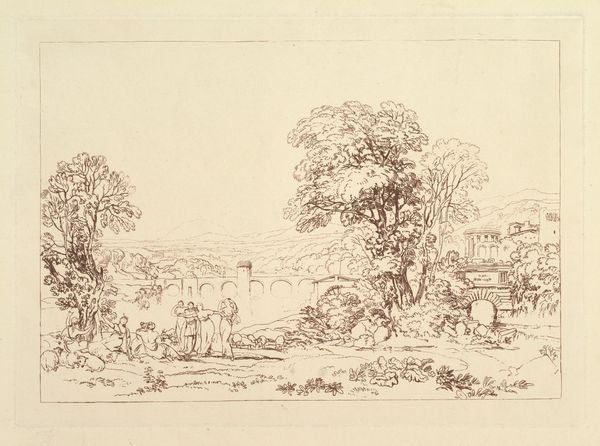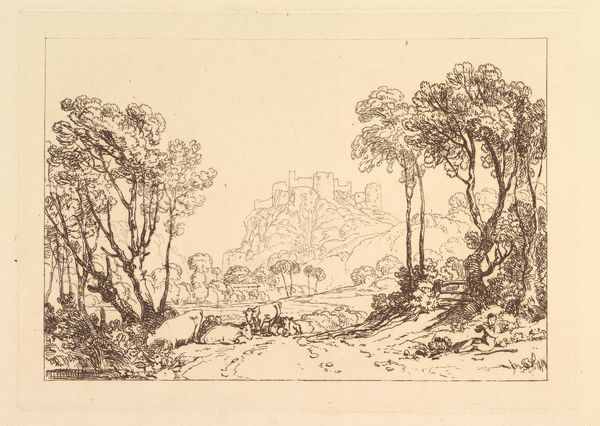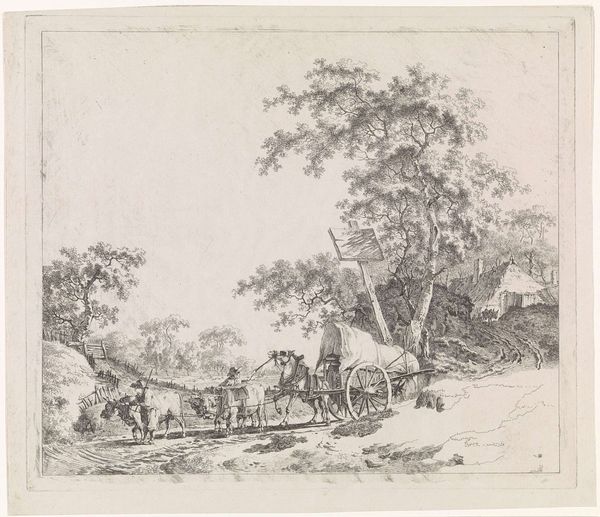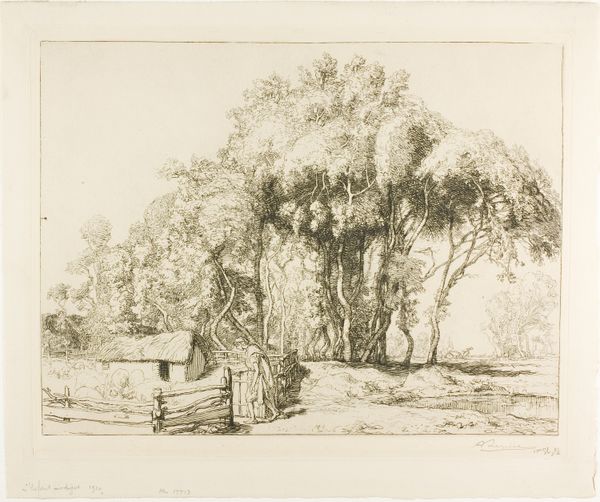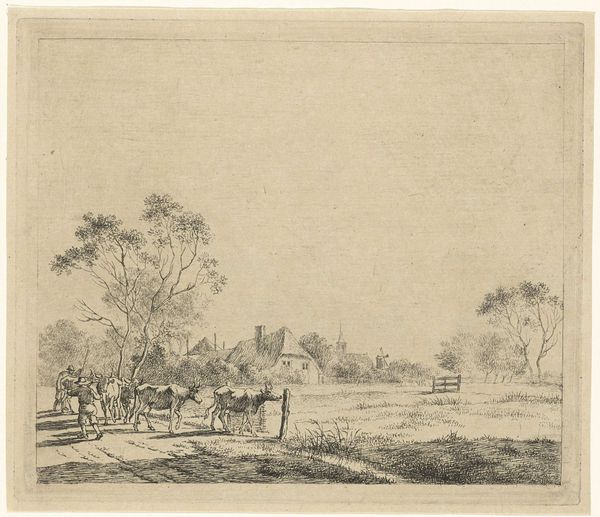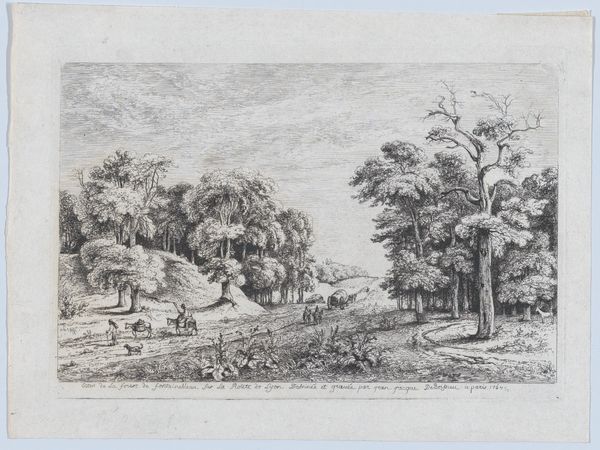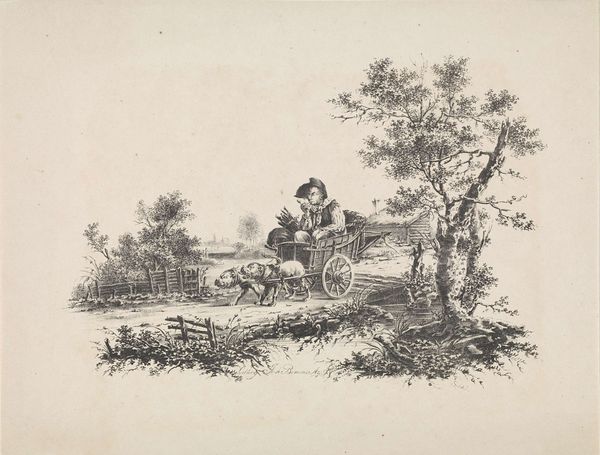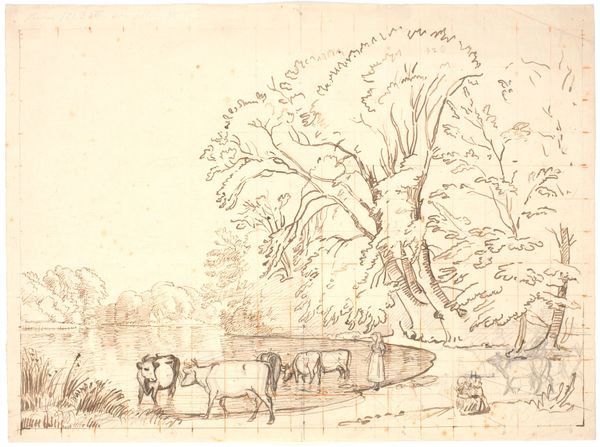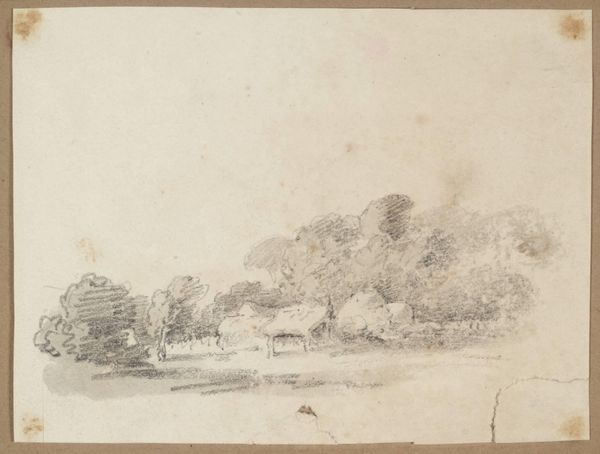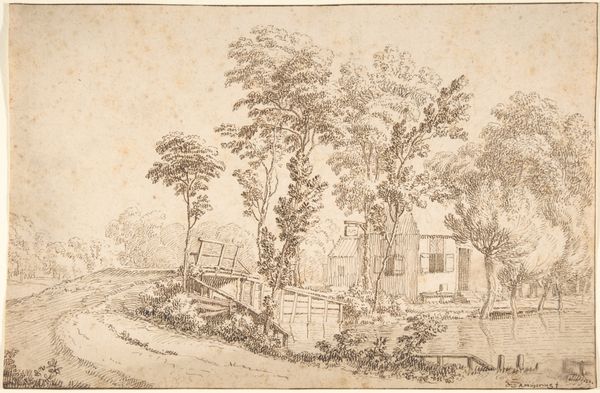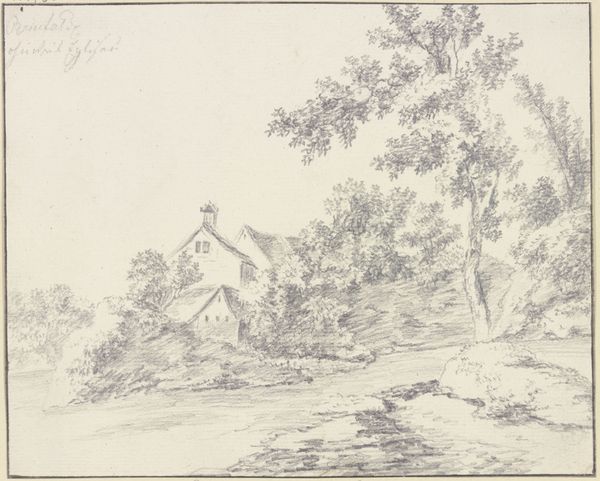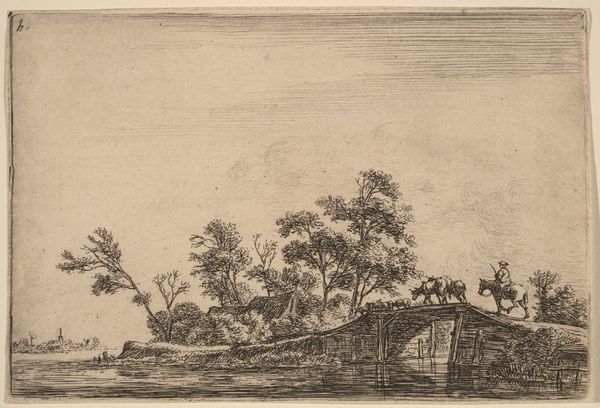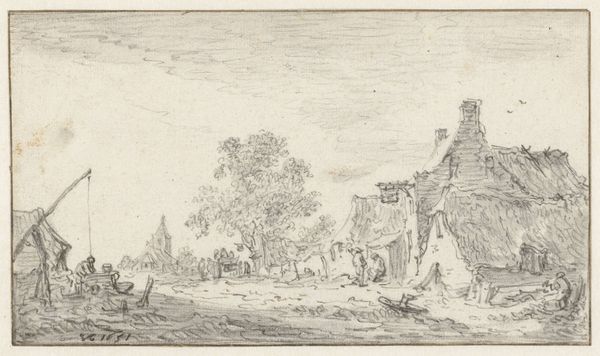
print, etching
#
dutch-golden-age
# print
#
etching
#
landscape
#
etching
#
genre-painting
#
realism
Dimensions: height 259 mm, width 300 mm
Copyright: Rijks Museum: Open Domain
Curator: Up next we have "Landscape with Harnessed Cattle and a Horse Pulling a Cart," an etching created around 1780 by Barend Hendrik Thier. What's grabbing your eye? Editor: Immediately, I notice a sense of starkness. It’s a landscape, but rendered in very simple lines; almost as if devoid of warmth and joy. Curator: Right, look at how Thier employed etching. The lines aren't just descriptive; they convey the texture of the working life. Etching in the 18th century was a laborious and relatively accessible process; so it made art reproducible to the popular consumption. Editor: Indeed, the landscape becomes almost a stage for understanding the lives embedded within it. Consider the labor depicted – the animals pulling heavy loads, likely contributing to the larger agricultural market and its social power relations. It really evokes the broader relationship between land and labor. Curator: Precisely! It's tempting to view it merely as a pretty scene, but look closer. The marks suggest both the ease of printed art and also the effort that is exerted in a common landscape by the livestock. I mean, that large central tree is monumental. What materials were used for the sign attached to its trunk? And why does the hut feature more prominently than figures? It gives the entire scene such texture and material agency! Editor: Good questions. Think about the implied environmental impact – deforestation for agricultural production or to access basic material resources. Furthermore, in those seemingly idyllic scenes there could be an expression of inequality, or land distribution. Curator: Yes, it almost romanticizes but definitely documents this form of animal labor. By using printmaking, this moment gets pushed out across different hands for distribution and maybe also changes in the market. I bet if we tested this work's chemical makeup, it would reveal changes to printmaking material access as a result of broader colonialism. Editor: I agree that while seeming a gentle countryside picture, its implications speak to labor imbalances. Thinking through that framework enhances how we interpret the art's intention and consequence. Curator: For me, revisiting Thier's technical approach reveals both the history of printmaking and this particular moment when the common worker’s everyday efforts became a worthy topic for artists’ study. Editor: Yes, so looking at Thier’s etching lets us weave narratives that examine those historical settings as part of global issues. I am thinking now about sustainability today and agricultural equity.
Comments
No comments
Be the first to comment and join the conversation on the ultimate creative platform.
